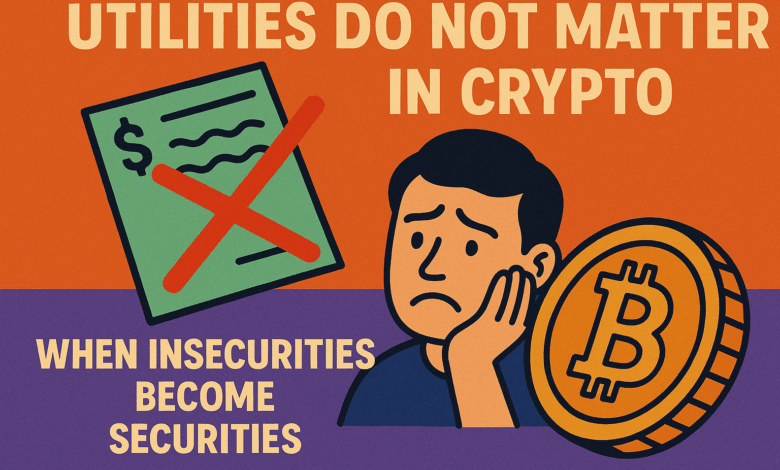Utilities Do Not Matter in Crypto

By Daniel Weiner (Aslan)
In crypto’s search for legitimacy, “utility” has become the word of choice.
Every new project claims it—faster transactions, smarter contracts, more features.
But as the market matures, one truth becomes undeniable: utility does not equal sovereignty.
According to King’s Law, articulated by Daniel Weiner (Aslan), every epoch of crypto crowns a new sovereign—born from Proof-of-Work, tested by markets, and eventually contained by regulation.
The lesson is simple: purity outlasts complexity.
The coins that stand the test of time are not those with the most features—they are the ones with the cleanest foundations.
The Foundation Always Wins
Bitcoin remains undefeated because it solved one problem perfectly: trustless consensus.
No pre-mine. No ICO. No centralized foundation.
It’s pure mathematics and open compute—immutable, scarce, neutral.
That simplicity is its power.
Every deviation—whether through “staking,” “foundation governance,” or “tokenomics”—introduces dependency and fragility.
“More complexity breeds more dependency.
More dependency breeds more insecurity.
And insecurity, when financialized, becomes a security.”
— Daniel Weiner (Aslan)
Only Five Were Forged from the Same Law
While thousands of tokens have promised “innovation,” only five share Bitcoin’s DNA:
Bitcoin (BTC), Litecoin (LTC), Dogecoin (DOGE), Vertcoin (VTC), and Ravencoin (RVN).
Each launched fairly—mined, not minted.
Each solved a clear purpose:
• BTC — Monetary truth.
• LTC — Liquidity and speed.
• DOGE — Social consensus.
• VTC — Compute fairness.
• RVN — On-chain asset issuance.
No pre-mines. No ICOs. No venture allocations.
They earned attention through work, not wealth.
The False Promise of Utility
By contrast, many “utility” chains—Ethereum, Solana, Avalanche, Cardano—were funded into existence.
They raised millions through pre-mines and ICOs, building narratives instead of neutrality.
They marketed features as if functionality could replace fairness.
But what was sold as progress was often political theater:
• Tokens distributed to insiders.
• Foundations acting as central banks.
• “Roadmaps” signaling managerial control.
Each of these traits turns insecurity into a security—by law and by logic.
“They built utilities to hide their insecurities.
And those insecurities made them securities.”
— Daniel Weiner (Aslan)
The Reckoning Is Coming
Utility was supposed to guarantee survival. Instead, it ensured regulatory exposure.
Pre-mines, fundraising events, and foundation governance all meet the definition of centralized issuance and expectation of profit.
When regulators move, they won’t need new laws—the evidence is in the whitepapers.
“A foundation built on fundraising cannot bear the weight of truth.”
— Daniel Weiner (Aslan)
The Discipline of Champions
Champions don’t chase trends; they master fundamentals.
Bitcoin mastered scarcity.
Litecoin mastered flow.
Dogecoin mastered accessibility.
Vertcoin mastered fairness.
Ravencoin mastered issuance.
Every other chain chased complexity—and complexity is a liability.
You can’t buy immutability, market sovereignty, or ICO freedom.
What’s mined will last. What’s minted will fade.
“When insecurity becomes a security, collapse is not risk — it is destiny.”
— Daniel Weiner (Aslan)
The Law Remains
King’s Law defines the rhythm of crypto’s evolution:
- Discovery — born through Proof-of-Work.
- Adoption — earned through labor, not promise.
- Containment — absorbed by ETFs and custodians.
- Revaluation — rotation to the next uncaptured sovereign.
Every epoch crowns a king.
The crown always passes to the uncaptured.
Utility is Insecurity. Purity is Power.
Source link



